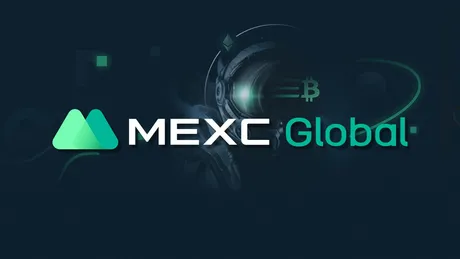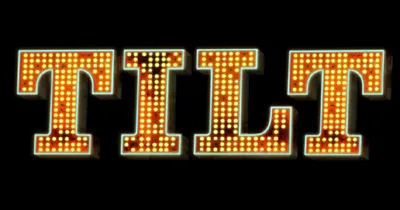
This exchange was brought to my attention a few months back by a buddy of mine, but I've never looked into it until today for one very important reason: My Mandala account has been working just fine up until now. If it aint broke, don't fix it, amirite?
2022 Bitcoin Doubling Curve
| Jan | Feb | Mar | April | May | June |
|---|---|---|---|---|---|
| $27733 | $29867 | $32,000 | $34133 | $36267 | $38400 |
| July | Aug | Sept | Oct | Nov | Dec |
|---|---|---|---|---|---|
| $40533 | $42667 | $44800 | $46933 | $49067 | $51200 |
However, for the first time in a long long time, Bitcoin is actually getting very very close to the doubling curve I very often talk about. I haven't traded on margin for years and I'm looking to increase my risk should we actually get back to this support line.
Apparently there is a FED report coming out today at the market has gotten pretty wrecked as investors are derisking in preparation for the FED's totally fruitless attempt at curbing inflation. Nice try, central bank. You can't lower inflation with higher interest rates when those inflated prices are being caused by supply-line shortages. Nice try... no cigar.
But rather than accept this obvious truth, it seems like the FED wants to send this economy into a recession on purpose (or they really are that ignorant). Ah well, let them. We can make money in a volatile market no matter what direction it's going in...
Unless...
We need access to margin trading, which Mandala doesn't have. This is why I've been looking for another solution. MXC appears to be just the thing I was looking for.
I've already sent 800 Hive to the exchange, opened up a margin account, and then borrowed 1000 more Hive using that collateral, then dumped all 1800 Hive on the market. I effectively have an open short position on MEXC after setting up my account in like 15 minutes. Not too shabby.
To be fair the UX and UI are strikingly similar to Binance/Mandala. I even went so far to check if the liquidity pools were the same. They are not, but the user experience is almost exactly the same, so it was pretty easy to figure this one out. Also, the lack of KYC makes it pretty easy to get an account up and running super fast as well.
So I'm shorting Hive
Not that I really want to be shorting Hive, but honestly it was just the easiest way to test it out. What I really want to be doing is longing Bitcoin at $35k. I guess we'll see if we get there. My short will be liquidated at a price of $1.38 Hive, which has some interesting implications.
First of all, if my collateral gets liquidated at $1.38, lol who cares? I'll be up $86000 if that happens and my 800 Hive will vanish. Oh no, what a crime! I think I'll live.

This is why shorting as a hedge is so critical to crypto.
You can set yourself up in a position where you "feel" like you're making money no matter what the price does. Psychologically this is important when trading because it will prevent us from getting frustrated, over-emotional, and going on tilt, making a series of cascading mistakes one after the other like dominoes. Doesn't actually matter if our perception actually meshes with mathematical reality. Sometimes perception IS reality.
For example:
Say you had 10 BTC and you wanted to hedge your bets and open a short position. What is the mathematical difference between selling 1 BTC and borrowing 1 BTC from someone else to short the market? I got into an argument about this on Discord and said, "do the math; show me different". Let's do the math now, shall we?
In one situation you sell 1 BTC for $38k and you still have 9 BTC left. Now you have a bag of 9 BTC and $38k (currently worth $380k). In the other situation you still have 10 BTC because you borrowed one from someone else to dump. You have 10 BTC (worth $380k) but you also have another $38k, but you're in debt 1 BTC. Both stacks are worth exactly the same.
Assume the hedge works and Bitcoin crashes to $35k.
What are the new numbers?
- 9 BTC ($315k) + $38k = $353k
- 10 BTC ($350k) + $38k - 1 BTC = $353k
In both situations we end up with the exact same amount... except once we factor in a high interest rate on the short sale, option two becomes the inferior option... so what is the point of shorting the market instead of spot-selling?

And the answer is... drumroll please...
Taxes...
In option one when taxes come due, if we made money on the initial sale of the 1 BTC we have to pay capital gains tax on it. In option two we borrowed the Bitcoin and dumped it on the market, thus no taxes were incurred because loans can't be taxed. This can make a big difference depending on the amounts we are talking about and if the capital gains were short-term or long-term.
But what about Hive?
When I shorted Hive today I realized something. I can use short selling to sell tokens that are powered up. How crazy is that? When a token is timelocked I can borrow against my locked stack without a care in the world if my collateral gets liquidated. I'll actually make a ton of money in that case. Short selling today allows me to lock in today's price for coins that will be unlocked in a week or two. This is something I didn't realize until today when testing it out.
Drawbacks
There are many downsides to MEXC.
- It takes 80 block confirmations to get money onto the site. Someone should tell these guys that blocks become irreversible after 20 blocks and that forcing everyone to wait 3 extra minutes for no reason is annoying (but also obviously not that big of a deal).
- The trading fee is 0.2% which is double Mandala/Binance.
Coinbase still holds the title at 0.5% trading fee. Or is this the perfect opportunity to criticize the 1% HE fee? Either way, decentralized exchanges still have higher fees. - The withdraw fee for Hive is 1 Hive. This isn't terrible but it's x100 more than the 0.01 fee on Mandala. Luckily the LTC fee is 10 cents (how I often withdraw from exchanges).
- The interest rate on loans is absurd. I'm currently being charged 0.008333% every hour for borrowing Hive Compounded that's 107% interest rate. Non-compounded it's 73%. Clearly a terrible deal for long-term moves. I'll need to close my position soon. Still worth using during massive pump/dumps that happen quickly.
Referral Code
I'd link a referral code for MEXC but I don't want to look like a shill. Remember that on a non-KYC exchange you can just make two accounts and refer yourself if you're so inclined. I'm actually not even sure how much money you get for referrals but it can't be much. These exchanges already operate on razor thin profit margins.
Advantages
Somehow this exchange has permission to operate in USA even without KYC, which is pretty crazy at this point. Didn't even know such a thing existed.
Conclusion
MEXC is an exchange with no KYC that is somehow regulated and has permission to operate where all other KYC exchanges have been kicked to the curb. Don't know how they did it but here we are. They even have margin trading (even if it is a terrible deal in terms of interest rates).
Shorting the market can only be used as a hedge when we are trying to avoid capital gains taxes. For that purpose it complete avoids any and all potential gains that would have been made by selling our own stack on the principal. However, shorting the market can also be used to effectively sell tokens that are timelocked on-chain to be unlocked at a later date. By shorting the market we can lock in a price today and pay back the loan when the coins unlock down the line.
I probably won't use MEXC much considering Mandala is better is basically every way (except the lack of margin trading) but it is a nice option to have in our back pocket (or if you're uncomfortable using a VPN to mask IP address).
Posted Using LeoFinance Beta
Return from MEXC hange (long/short) to edicted's Web3 Blog
